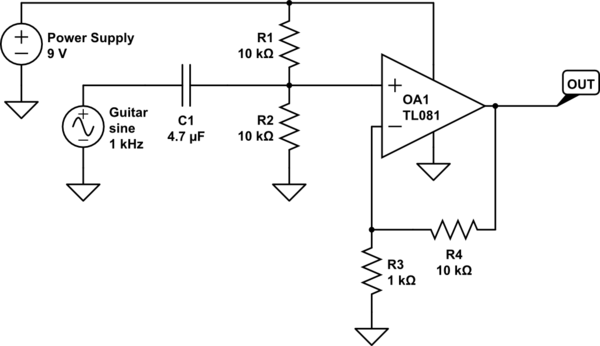I'm working on building a distortion guitar effect pedal for an analog electronics class I'm taking. I am struggling with building an amplifying circuit using an op amp (we just began learning about them), and I'm hoping I could get some tips. Guitar pedals generally run on a single 9V supply. This is the circuit I attempted to build in lab today, however, it did not give any output.

simulate this circuit – Schematic created using CircuitLab
In particular, I am wondering if it is necessary for me to bias the non-inverting input at 4.5V, and if this circuit would give me the desired gain of +10 if I build it correctly. This is not the specific Op amp I'll be using, I'm not sure which I'll be using yet, I haven't gotten that far.

